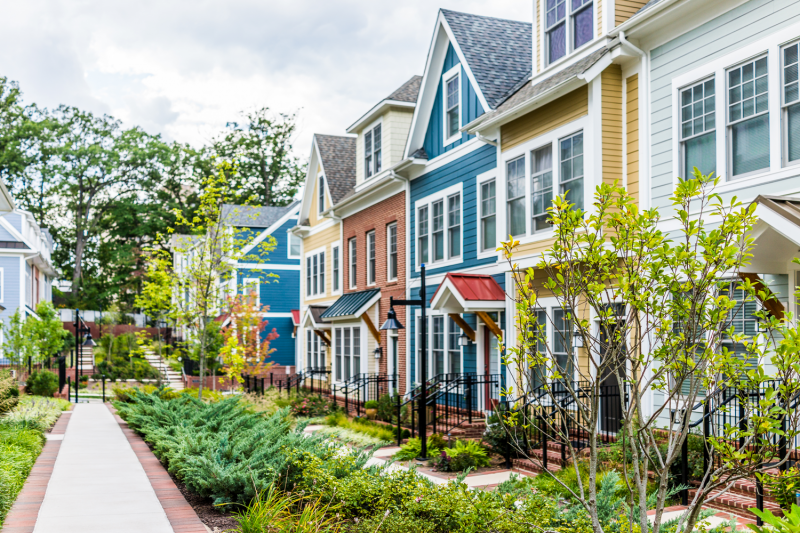In the architectural coatings market, formulators, contractors and DIY painters all have one big priority when they’re shopping for paints and coatings: durability.
Durability is defined differently by different people. The term encompasses several sub-attributes that dictate how a coating holds up against things like scratches, stains, cracks and fading.
To really understand durability, it’s important to know how users interact with coatings and what they expect from a finished product.
Durability and differing priorities
The market for durable architectural coatings can be divided into two main categories: contractors and DIY painters. Both expect a coating that is easy to apply and looks great, but their needs differ in terms of durability and specific performance attributes.
DIY painters are more likely to be working with interior coatings, typically inside their own homes, so they want paints that stand up against the scuffs and scrapes of everyday life. Contractors, on the other hand, tend to work more with exterior coatings, and they seek out products that can withstand the elements and keep their clients satisfied with the results.
“What drives the interior market is appearance, stain resistance and stain removal,” says Charles Johnson, Market Segment Manager of Architectural Coatings at BASF, “and consumer reports and scores — whereas the exterior market is more driven by [professional painters] and customer satisfaction based on durability.”
Because time is money in the professional market, contractors look for high-quality, long-lasting paints that minimize the need for repainting and callbacks.
Top durability concerns by market
| Interior coatings: |
Exterior coatings: |
| Stain resistance |
Color retention |
| Washability |
Dirt pickup resistance |
| Color retention |
Surfactant leaching resistance |
| Burnish resistance |
Grain crack resistance |
| |
Gloss retention |
Defining durability
What properties fall under the durability umbrella? There are several attributes manufacturers consider when developing new technologies, but let’s take a look at the usual suspects.
Stain resistance: Plain and simple, stain resistance refers to the coating’s ability to repel stains — typically from household sources like messy dinners in the kitchen, wine and coffee spills when you’re entertaining, and the crayon masterpieces your kids draw on the walls.
Washability: As the term suggests, washability measures your ability to wash stains off a coated surface. A more washable coating makes it faster and easier to clean up spills. In other words, you’ll use less elbow grease to make the paint look good as new.
Color retention: Appearance is top of mind for most end users — they tend to shop for paints using visual attributes, like its color saturation and smoothness when applied to a surface. Color retention simply means how long the paint retains its original hue and intensity.
Burnish resistance: When certain objects rub up against a coated surface, friction can cause the paint to burnish. Burnishing can look like a glossy or shiny spot on an otherwise matte paint, and so burnish resistance helps the coating stay flat and consistent.
Grain crack resistance: Exterior coatings are exposed to UV rays, wind and rain, and changing temperatures, which makes them more susceptible to cracking and peeling. Crack resistance helps the paint hold its structure even when the coated material (typically wood) expands or contracts in reaction to the temperature, or when it is exposed to abrasive conditions.
Dirt pickup resistance: Similar to stain resistance in interior coatings, dirt pickup resistance refers to the paint’s ability to repel dirt and other blemishes from the outside environment. In a nutshell, the coating should maintain its original appearance as much as possible.
Surfactant leaching resistance: Certain surfactants are mixed into paint formulations to modify their chemical structure. When rain falls on a coated surface, surfactants can leach out and create streaks in the paint. Coatings should have good surfactant leaching resistance to counter this effect.
These characteristics can sometimes overlap between exterior and interior coatings or DIY and professional painters. Other attributes don’t fit neatly into the durability category, but they come up often enough that manufacturers take notice.
For instance, Johnson mentions an insight his team gleaned in market research: “One of the things that was surprising to us is that we had DIYers talk about adhesion — [that is], when they paint and pull off the tape.”
Professional painters expect sharp, seamless lines when they use tape to demarcate coated areas, and adhesion issues can cause frustration during the process. A paint with good adhesion can help keep those lines clean.
Formulating the full can of paint
Once they understand the properties customers expect from architectural paints, formulators must find an efficient way to deliver all those attributes in a single coating.
Many formulators rely on BASF’s line of Acronal EDGE acrylic resins for a combination of unique durability attributes, high-quality aesthetics and ease of use.
Acronal EDGE 4750, for instance, can be formulated into interior coatings for excellent stain resistance, dirt pickup resistance and scrub resistance. Its counterpart for exterior coatings, Acronal EDGE 4247, offers outstanding grain crack resistance, adhesion, dirt pickup resistance and surfactant leaching resistance.
The finished formulation will look different to everyone, and BASF collaborates with manufacturers to deliver a completely customized product.

“One of our advantages is that, from a product perspective, we participate in everything that goes into a can of paint — minus the TiO2,” Johnson notes. “When we’re developing products, we use knowledge and expertise from different areas within our organization to take a well-rounded approach to our product development.”
That internal collaboration allows BASF to take a more holistic approach to formulation, offering a complete package that is more optimized for the end consumer.